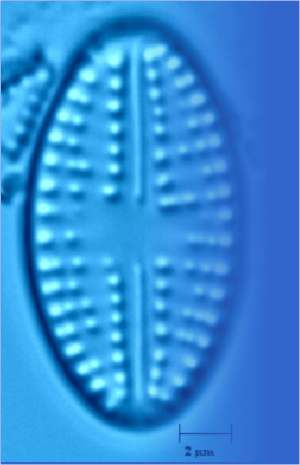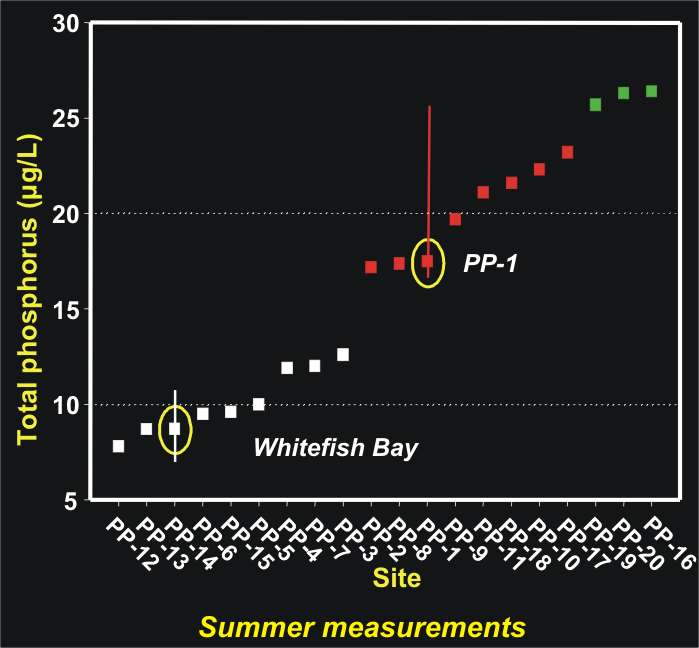
| |
| HOME |
| PEOPLE |
| RESEARCH |
| PRESENTATIONS |
| NEWS & LINKS |
| P.E.A.R.L. |
| Total Phosphorus (TP) Gradient in the LoW |
||
| LoW TP gradient: development of a diatom-based inference model |
||
The perception that water quality has deteriorated in the Lake of the Woods (LOW) in recent years has led to increased efforts to collect and analyze water quality data in the Rainy River Basin. However, verification that conditions have worsened is hampered by a lack of long-term chemical or biological data. In the absence of historical data, paleoecological techniques can be applied to fill in data gaps, and to quantify long-term changes in water quality that pre- date existing monitoring records. Late-summer readings of total phosphorus (TP) typically range from 20 to 50 μg/L across the lake, with significantly higher values in southern regions. This gradient reflects differences in the morphometry of individual bays, and their proximity to the primary tributary, the Rainy River. In this study, we examined spatial and seasonal variability in water quality throughout the LoW, with an emphasis on variation of algal nutrient concentrations (i.e. total phosphorus, TP). In addition, we examined diatom assemblages from surface sediment samples to determine whether they track within-lake differences in environmental conditions. Results from this study may be used to develop ecologically meaningful management strategies for large lakes such as the Lake of the Woods, and to develop quantitative models for reconstructing environmental variables through time using paleolimnological techniques. These results are of interest to a broad range of researchers including lake managers. Publication: Pla, S., Paterson, A.M., Smol, J.P., Clark, B.J., Ingram, R. (2005). Spatial variability in water quality and surface sediment diatom assemblages in a complex lake basin: Lake of the Woods, Ontario, Canada. J. Great Lakes Res. 31:253–266.
|
||
